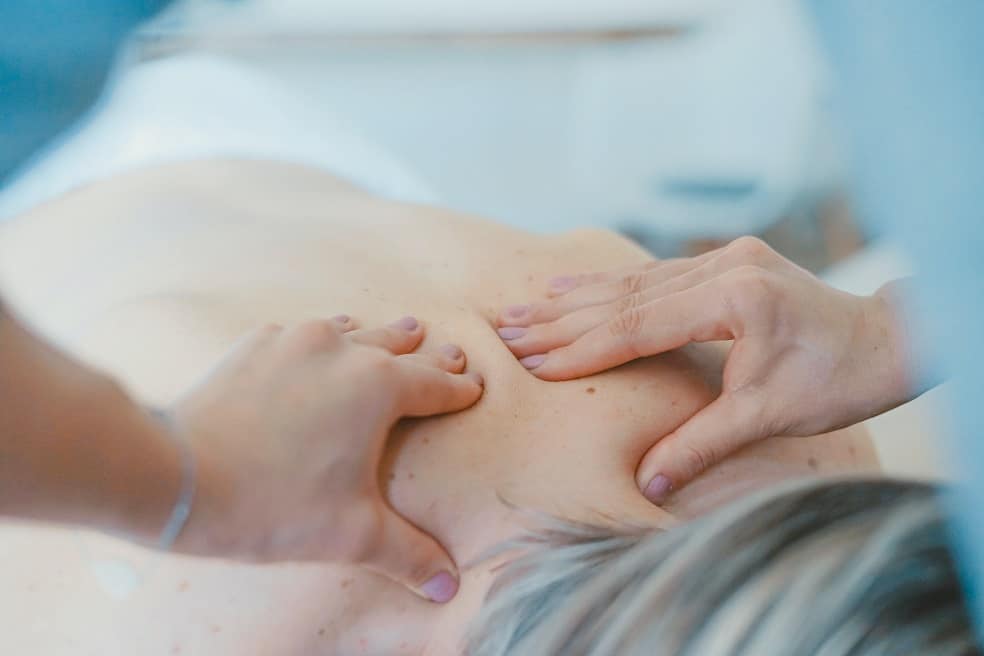Looking for Expert-Level VA Claim Answers?📱Call Us Now! 737-295-2226
I can almost GUARANTEE that most veterans have orthopedic conditions.
It comes with the job.
With jumping out of airplanes, high-risk training, and weekly marches with 40 pound rucks on your back while carrying a weapon, we get beat up!
So what does this mean for you?
Well, if you experience pain associated with an orthopedic condition, you should get evaluated for potential VA claims.
So in this expert level overview, we show you EVERYTHING you need to know about veteran orthopedic conditions and what that means for your VA claim.
- I can almost GUARANTEE that most veterans have orthopedic conditions.
- What are Veteran Orthopedic Conditions?
- Common Veteran Orthopedic Conditions
- What Do I Need to Claim an Orthopedic Condition?
- How To Get a Secondary Service Connection for an Orthopedic Condition
- What Do I Do If I Think I Have Orthopedic Pain?
- How Can Orthopedic Care Help Veterans?
- How Can I Learn More?
- About the Author
What are Veteran Orthopedic Conditions?
“Orthopedic condition” is anything relating to dysfunction or pain of the bones, joints, muscles, ligaments, tendons, cartilage, or with bodily movement from a musculoskeletal standpoint.
Orthopedic problems involve, but not limited to, soreness or rigidity of muscles and joints. Some commonly affected areas are knees, hips, back, shoulders, elbows, wrists, neck, feet, and ankles.
When looking at these types of claims, know that you have options. The more you know, the more likely you are to get what you need, so check out our video on how to file for an orthopedic condition.
Common Veteran Orthopedic Conditions
Orthopedic pains and distress can affect every aspect of your life. What does that mean for veterans who served in the military? There is a high likelihood the military lifestyle will speed up or has already sped up the process of your joints aging quicker.
Here are three of the most common veteran orthopedic conditions.
- Sciatica
Orthopedic pain can also trigger sciatic nerves and cause immense pain. When your joints are inflamed, the sciatic nerve is also inflamed and can limit movement due to illness. The treatment for this includes anti-inflammatory medication, stretches and exercises, heat and ice therapy, and physical therapy. You can get VA disability for sciatica, however it can not be rated higher than “moderate” which is maxed out at 20%. We further explain VA disability ratings for sciatic in this post.

- Arthritis
When we talk about veteran orthopedic conditions, a common issue or diagnosis veterans are faced with is arthritis. Arthritis is degenerative changes in the joints. Some joints are affected more than others. Some people are more affected than others, but pretty much everybody will get arthritis at some point.
Since veterans spend their entire lives on their feet, it is quite common to suffer from a severe case of arthritis later in your life. The joints are swollen and feel tender upon touch. This causes a lot of pain for the patients. Your local VA doctor will be able to treat or manage your arthritis-related pain with the help of painkillers, therapy, and a team approach. VA disability for arthritis will be rated at 10 or 20 percent based upon the number of joints affected and the level of debilitation it causes.
Read this article to learn more about how the VA determines benefits for arthritis.
- Low-back Pain
This is the most common orthopedic condition among veterans. The rough life of an on-duty soldier often ends in low-back pain. Pain in the lower back can restrict mobility and interfere with normal functioning. The doctor will be able to diagnose this with a simple X-Ray or CT-Scan.
The treatment plan often includes activity modification, medicine, physical rehabilitation, therapy, osteopathic manipulation, occupational therapy, or surgery. We’ve got an article on how to file a low back disability claim or you can watch the video below.
Besides the conditions we’ve already covered, veteran orthopedic conditions also include disabling and painful conditions of the neck, knees, ankles, elbows, shoulders, or feet.
What Do I Need to Claim an Orthopedic Condition?
Before filing for an orthopedic VA claim, you must have a current diagnosis, a service event or nexus to an in-service event, and a medical examination in line with 38 CFR.
#1. You need 38 CFR. What is 38 CFR? 38 Code of Federal Regulation is what the VA utilizes to determine what your percentage should be for disabilities. There is a paragraph and line number for every single diagnosis you can claim. The VA has determined what objective measures are utilized to rate conditions. To better prepare yourself for your VA Claim, I recommend spending time on the 38 CFR webpage learning as much as you can about how the VA rates your diagnosis.
Remember, first you need a current diagnosis and medical evidence to back up your injury. We have a team of doctors and PA’s who are here to help you get the evidence you need.
#2. You need a current diagnosis. One of the major things you need for your claim to get approved is a current medical diagnosis. Without this, you do NOT have a claim. What does it mean to have a current diagnosis? It means that somewhere in your medical record the actual diagnosis is documented.
Let’s explain this in terms of an example: You injured your knee during combat 20 years ago, but you did not get seen again for that knee condition. That alone will be a hard case to get the VA to approve the claim. Likely, you self treated and lived with the pain, as many of us do while on active duty and as veterans.
Twenty years go by and you are now experiencing increased pain in that same knee. You will see your medical provider to address the knee pain and provide a treatment plan. This is the current diagnosis and it will be documented in your medical record or note from that visit. It might say diagnoses like “knee strain,” “arthritis,” or “degenerative joint disease” as examples.
One of the biggest things we see missing in medical records is a current diagnosis. You cannot just tell the VA you have knee pain. It has to be documented by a medical provider that you have recently seen.
BUT, the good news is that if you do not have medical records for a condition you want to get service-connected this is the perfect way to go. Watch below to learn how to GET and USE your medical evidence.
#3. Your diagnosis needs to be documented. When you see your doctor, make sure that you actually get the diagnosis written in your documents. You may request your medical notes from any provider you see, and we recommend you read through them to find the diagnosis. This part can seem confusing and why we recommend our medical team of professionals review your records, if veterans need it.
But what if my doctor will not give me a diagnosis?
You do NOT have to tell your doctor what you need this information for! You can go to your urgent care, orthopedic doctor, or a specialist, and tell them about the issue you have been having trouble getting pinned down. These appointments do not have to be done with VA medical providers.
Oftentimes veterans utilize their non-VA medical insurance and see civilian providers. You may prefer this route and be sure to request the medical records to upload with your claim to eBenefits. Read this article to learn more about what you can expect from the VA when you file for ortho conditions.

How To Get a Secondary Service Connection for an Orthopedic Condition
The good news is, the entire human body is connected. What does that mean for veteran claims? In plain terms, it could be likely that you are affected by secondary diagnoses related to service injuries.
An example could be a knee injury while in service and that knee pain over the year has accelerated arthritis. Due to accelerated arthritis, you now walk with an antalgic gait (AKA you limp because it hurts to walk). After years of walking with a limp, you now have back issues, etc.
Proving secondary conditions requires medical-based evidence and literature to prove the two are connected. Using the VA’s own literature to prove why two claims can be connected is a great way to go. This gives the VA a difficult time refuting anything said. When looking at secondary service connections this guide will help you in pinning down what you can claim.
We recommend to all veterans, whether you use our services or not, to include a NEXUS letter in your claim. The medical professional writing the NEXUS letter will examine your medical records, your service record, and interview you to piece all the connections together of medical evidence for the secondary service connection.
Here’s an article about secondary service conditions to learn more, or watch our video about how to get a secondary service connection for your VA Claim.
What else can I file as secondary to orthopedic conditions?
These next few conditions are related to orthopedics, but not actually the same. This is what we like to call secondary conditions, meaning your primary service-connected disability caused another disability.
For example, we often are able tie gastric reflux back to orthopedic conditions. Why? You have knee pain, back pain and have been taking Motrin for years. Now you have gastric reflux from the chronic use of Motrin. You may not even know that taking it has a link to developing gastric reflux. This is a link which the VA recognizes and it has to do with medical facts.
Radiculopathy is another common secondary condition. Symptoms include things like, numbness, tingling, paresthesia down your legs, down your extremities. Or even things like bulging discs in your back which has resulted in numbness and tingling down your leg. You have to get a diagnosis of that, just like every other claim. You can’t just say; I have this thing, can you write me a nexus letter? You need to go to the doctor and have that DOCUMENTED. This is key.
What Do I Do If I Think I Have Orthopedic Pain?
The first thing you need to do is get your butt to the doctor! Get your medical evidence up to date and find out what else you may still need.
The next step would be talking to an expert over what exactly you need to file a claim for. They will go over what would be the best secondary conditions, what extra medical evidence do you need and coach you through the process.
My best piece of advice is not to give up the first time a claim gets denied. I often tell people, if you got a horrible haircut there is a high probability you do not return to that same barber. Instead, you find a different barber and continue to get your haircut.
The same goes for receiving care for orthopedic injuries that cause pain. Medical providers do not expect you to live in pain, so find an orthopedic team that will listen to you and work with you to get you to a good level of functioning.

How Can Orthopedic Care Help Veterans?
The main focus of veteran orthopedic care is to offer a natural way of relieving joint pain and distress.
Orthopedic care can treat multiple conditions that are common among military veterans. While Orthopedic care focuses on joints, tissues, and fractured ligaments, it also helps relieve the following conditions:
- Insomnia
- Anxiety
- Mood fluctuation
- High blood pressure
- High cholesterol
- Chronic back pain
- Joint damage
- Sciatica
- Diabetes
- Tissue damage
- Arthritis
- Scar tissue
The qualified doctors stimulate the body’s natural healing abilities to take care of the affected joints and ligaments. The procedure involves non-invasive techniques to offer a completely natural approach to healing. Remember, every veteran is different and what might work for one, may not work for another.
Veterans require holistic rehabilitative orthopedic care to get a healthy life back. Combining different types of care is usually the best option. Don’t give up if your first round of treatment fails to heal your pain or resolve your issues.
How Can I Learn More?
It is of utmost importance to keep yourself in sync with the current regulations by the VA. For more guidance, our team can help to get you to where you deserve by coaching you through the entire VA process. Interested? This link is the fastest way to sign up!
Become an Insider
We’re Veterans helping Veterans Worldwide™, and since 2016 we’ve helped 10,000+ Veterans just like you INCREASE their VA disability rating!
About the Author

About VA Claims Insider
VA Claims Insider is an education-based coaching/consulting company. We’re here for disabled veterans exploring eligibility for increased VA disability benefits and who wish to learn more about that process. We also connect veterans with independent medical professionals in our referral network for medical examinations, disability evaluations, and credible independent medical opinions and nexus statements (medical nexus letters) for a wide range of disability conditions.



